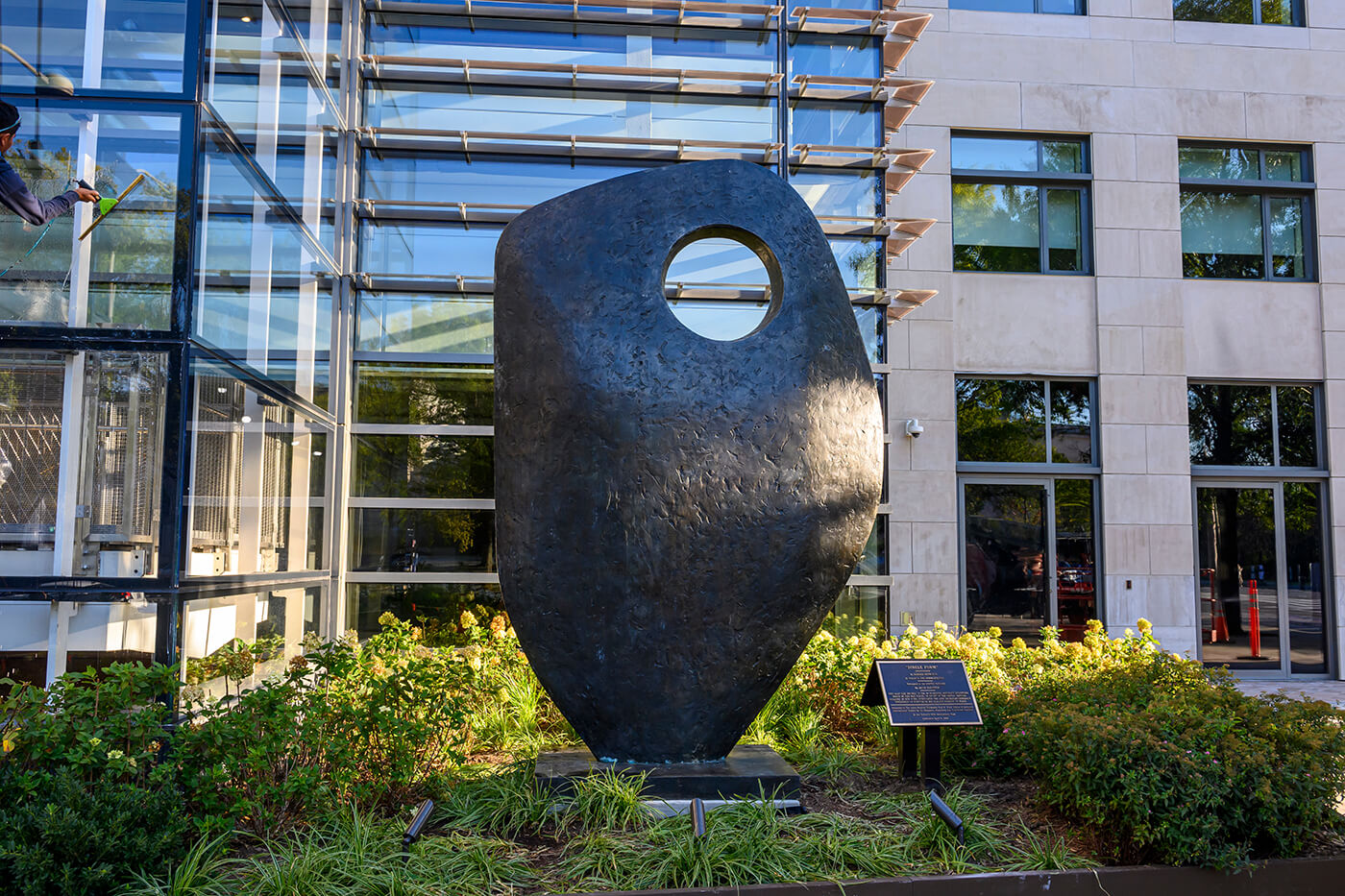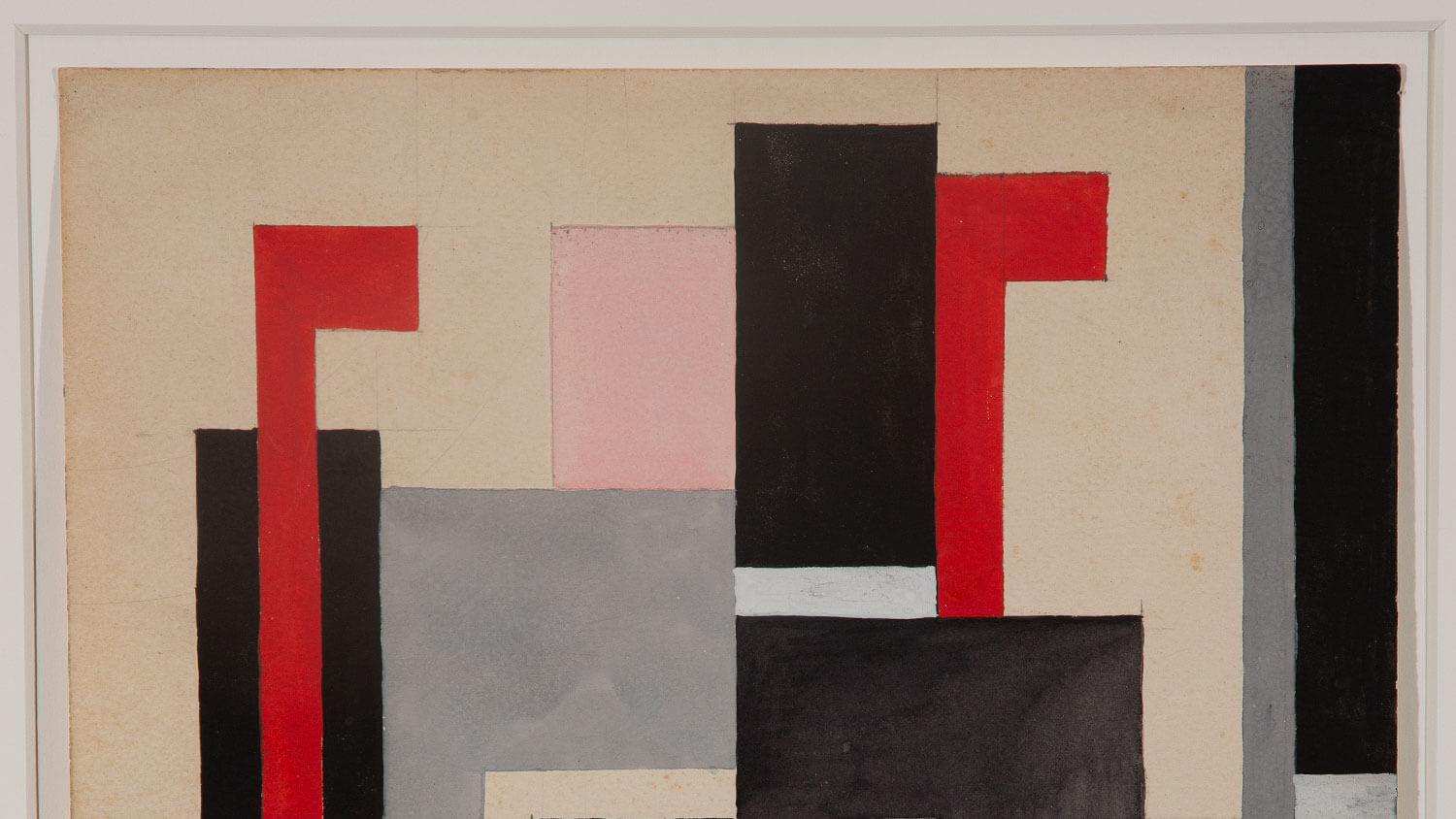Permanent Art Installations
Woven into the very fabric of the Hopkins Bloomberg Center’s design, artwork is an essential participant in shaping a robust environment for learning, convening, discovery and dialogue. Now you can experience the Center’s commissioned paintings, mosaics, historic sculptures, and more with Bloomberg Connects, an app offering free digital access to art collections and exhibits around the world.
Through the app, users can listen to exclusive audio guides, read commentary from art critics and historians, and view countless works of art including six pieces from the University’s hub in D.C., as well as the more than 200 public works of art found across Hopkins campuses including the Homewood campus, the Sheikh Zayed Tower and Charlotte R. Bloomberg Children’s Center at Johns Hopkins Hospital in East Baltimore. Bloomberg Connects is available for download on iOS and Android devices.
Learn more about the art at the Hopkins Bloomberg Center:
Installations
Four commissioned, permanent, site-specific works are integrated into the building’s interior from renowned international artists Sandra Cinto, Sam Gilliam, Elias Sime, and Shahzia Sikander.
Selected for their distinctive voice and cultural heritage, each artist commissioned by Johns Hopkins reflects the Center’s mission to foster dialogue and a global exchange of ideas across a wide range of viewpoints.
A Lovely Blue And !

One of the final works on canvas by the late D.C. artist Sam Gilliam—a prolific Washington, D.C. artist and one of the great innovators of Post-War American Art, created the monumental A Lovely Blue And ! to anchor the west wall of the Center’s atrium on the ground floor.
A Lovely Blue And ! encapsulates Gilliam’s belief in the efficacy of abstraction and the value of risk-taking. The composition was created using a broad range of acrylic paints, freely mixed with powdered metals, sawdust, and other unconventional materials.
Let Freedom Ring

Sandra Cinto’s Let Freedom Ring, a floor to ceiling hand-painted ceramic tile mural located on the eastern wall of the second floor, draws inspiration from the Center’s location. The text embossed on the mural tiles acknowledges Washington, D.C.’s role as the center of democracy, while also evoking imagery from the natural world and musical notation. The tiles were cut by hand, then hand painted, and fired and glazed multiple times.
Roots

Elias Sime’s most ambitious permanent work to date, a 2,000-sq-ft reclaimed e-waste installation, foregrounds the cost of globalized consumerism. Roots wraps around the exterior of the Center’s ground floor theater, repurposing the relics of consumerism as alternatives to oil paint, acrylic, or clay. Sime coaxed the detritus into assemblages that abstractly suggest topography or a landscape when viewed from above with circuits and keyboards laid out into distinct fields and wires coiled and braided into textile-like patterns.
Metaxu

Inspired by the parallels between the pixelated and natural world, Shahzia Sikander balanced traditional and contemporary approaches to making in Metaxu, her glass mosaic mural that spans the entire north wall of the seventh-floor café. Sikander’s title translated from Greek means between or in between and similarly, the landscape of Metaxu occupies dual realms, evoking the natural world and the human impulse to sculpt it into an idealized paradise.
Sculpture & Historical Monuments
Single Form (1961-62)

Located outside the doors of the Hopkins Bloomberg Center, Barbara Hepworth’s sculpture, Single Form (1961-62), is an 11-foot-tall bronze-cast sculpture that duplicates the original, 21-foot sculpture she created to anchor the plaza outside the entry to the United Nations Headquarters in New York City. The sculpture is a dedication to Hopkins’ past contributions to international relations and diplomacy and reaffirms the potential for dialogue to achieve solutions to global challenges.
Berlin Wall

The 7,000 lb fragment of the Berlin Wall was originally installed in the courtyard of SAIS’ Nitze Building on Massachusetts Avenue. It was a gift from the Berlin Senate acknowledging the role SAIS and the American Institute for Contemporary German Studies—now the American-German Institute—played in fostering relations between the United States and postwar Germany. While originally operating as a tool of an authoritarian and oppressive state, the fragment is tagged with graffiti by pro-democracy protesters, symbolically communicating the realistic hope of oppressed peoples to achieve liberty.

